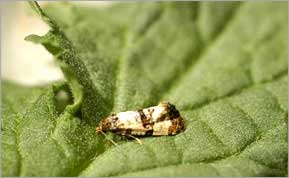
Most biological control systems fall somewhere between the two extremes outlined above. The effectiveness of biological control can range from highly effective, where people may use this approach and exclude other weed control measures, to failure. Biological control agents are ideally employed for use against established weeds rather than new invaders. Conservation – changing environmental conditions to aid in natural enemy survival.įor over 100 years, biological control principles have been used throughout the world as an effective, economical, and environmentally responsible way to decrease the damage caused by invasive species.Augmentative – large numbers of natural enemies are released to control a target pest for a short amount of time.Classical – initially small numbers of natural enemies are released in target pest areas for long-term control.

There are commonly three types of biological control recognized: insects, pathogens, nematodes, mites) of pests to reduce pest population levels below that which would occur in the absence of their natural enemies. For our purposes, we will define the biological control of weeds as the use of live natural enemies (e.g. There are many definitions attributed to biological control. Biological control practitioners from across North America provide technical advice, guidance, and training on IPM, specifically targeting biological control of invasive weeds. North American Invasive Species Management Association (NAISMA) supports biological control as an integral part of an Integrated Pest Management (IPM) program.


Soil application of fungal spores of Coniothyrium minitans is used to destroy surviving structures of the common plant pathogen Sclerotinia sclerotiorum.

Sclerotinia sclerotiorum controlled by fungal spores More information is found on the E-nema website. Heterorhabditis bacteriophora nematodes are used to control pests such as wine weevil their control effect is helped by releasing bacteria into the soil which attack the wine weevil. More information about the Biocomes approach to control Aphids is found here.Įntomopathogenic nematodes to control wine weevil In this way the aphid population will decrease quickly. The aphids will die when the eggs come out and the young wasps start to grow. The parasitic wasp lays eggs in aphids, as shown in the movie. Aphids are a pest of plants and cause huge damage to plants as they remove nutrients from the plant. An example of biological control is the release of parasitic wasps to control aphids.


 0 kommentar(er)
0 kommentar(er)
